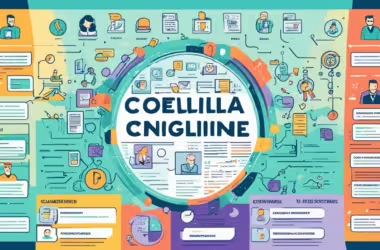In the fast-paced world of software development, efficiency and collaboration are paramount.
Version control systems, like Git, ensure teams work on the same codebase efficiently, but how do developers propose and integrate changes seamlessly? Enter the pull request (PR), a fundamental tool that fosters communication and streamlines code review.
This article delves into the world of pull requests (PR), exploring not just the core process but also advanced workflows and strategies to maximize their effectiveness.
Demystifying the Pull Request Process
A pull request (PR) acts as a bridge between a developer’s local code changes and the main project codebase. Here’s how it works:
Branching Out
Imagine the main codebase as a well-maintained highway. When a developer wants to introduce changes, they create a branch, essentially a copy of the highway, to work on their modifications without affecting the main road (codebase).
Crafting Your Changes
Within this branch, the developer makes their edits, fixes bugs, or adds new features. This is their playground to experiment and innovate.
A Call to Action: The Pull Request
Once satisfied with the changes, the developer submits a pull request. This initiates a formal review process, notifying other developers (reviewers) about the proposed modifications.
Review and Collaboration
The pull request (PR) acts as a platform for discussion and review. Reviewers can inspect the changes, leave comments, suggest improvements, and even propose alternative solutions.
This collaborative exchange ensures code quality, identifies potential issues, and fosters knowledge sharing within the team.
Merging the Changes
After addressing feedback and incorporating necessary modifications, the developer can “merge” the changes from their branch into the main codebase.
This integrates their contributions, effectively paving a new lane (adding features) or repairing a damaged section (fixing bugs) on the main highway.
The Benefits of Pull Requests (PR): Beyond Just Code Review
Pull requests (PR) offer numerous advantages for software development teams:
Improved Code Quality
Through code review, pull requests ensure that new code adheres to coding standards, best practices, and functionality expectations. This collaborative approach minimizes errors and promotes maintainable code.
Enhanced Communication
Pull requests facilitate discussions around code changes, fostering transparency and clarity within the team. This open communication reduces misunderstandings and ensures everyone is on the same page.
Version Control and Tracking
Pull requests create a clear record of changes made, who made them, and the rationale behind them. This facilitates easier debugging, version rollback if necessary, and attribution for contributions.
Distributed Development
Pull requests empower geographically dispersed teams to work on the same codebase seamlessly. The asynchronous review process allows developers to contribute and receive feedback regardless of location.
Early Detection of Issues
By catching potential problems during the review stage, pull requests prevent bugs from reaching the main codebase, saving time and resources during the development process.
Crafting Stellar Pull Requests: Tips for Success
To make the most of pull requests, consider these helpful tips:
Provide Contextual Descriptions
Include a clear and concise description of the changes you’ve made in your pull request. Explain the purpose of your modifications and the rationale behind them.
Break Down Large Changes
If your changes are extensive, consider splitting them into smaller, more manageable pull requests. This makes reviewing and providing feedback easier.
Utilize Comments Effectively
Leverage comments within the code to highlight specific changes and areas for discussion. This streamlines communication with reviewers.
Test Your Code Thoroughly
Before submitting a pull request, ensure you’ve rigorously tested your code to identify and address any potential issues.
Be Responsive to Feedback
Actively participate in the review process, address comments promptly, and incorporate valuable suggestions from your reviewers.
Beyond the Basics: Exploring Advanced Pull Request Workflows
While the core pull request process remains fundamental, various strategies can enhance its effectiveness in complex projects:
- Feature Flags: These flags allow you to conditionally enable or disable new features within the codebase. This enables testing and gathering feedback on new features before fully merging them, minimizing risk and ensuring a smooth rollout.
- Squash Merges: Instead of merging a branch with its entire commit history, a squash merge combines all the commits into a single one before integrating it into the main codebase. This can keep the commit history cleaner and easier to understand, especially for larger pull requests.
- Rebase Merges: This approach integrates the developer’s branch onto the latest version of the main branch before merging. Rebasing ensures all changes are applied on top of the most recent code, reducing potential conflicts during the merge process.
- Continuous Integration and Continuous Delivery (CI/CD): Integrating pull requests with a CI/CD pipeline automates code testing and deployment. This allows for faster feedback loops and smoother code integration into production environments.
- Code Review Tools: Several tools like Github Actions or GitLab CI/CD pipelines can be integrated with pull requests to automate tasks like code linting, static analysis, and unit testing. This provides automated feedback and helps maintain code quality standards.
Choosing the Right Workflow: Tailoring to Project Needs
The optimal pull request workflow depends on the size and complexity of your project, team dynamics, and risk tolerance. Here’s a breakdown of some common scenarios:
- Small, Agile Teams: Smaller teams with frequent deployments might favor a simpler approach with straightforward pull requests and merge processes.
- Large, Distributed Teams: For geographically dispersed teams, asynchronous communication and clear documentation within pull requests become crucial. Utilizing features like code review tools and detailed descriptions is essential.
- Highly Regulated Industries: Projects in industries with strict compliance requirements might necessitate more rigorous review processes with multiple reviewers and in-depth code analysis for each pull request.
Fostering a Culture of Pull Requests: Building a Collaborative Environment
Encouraging a positive pull request culture within your team can maximize its benefits:
- Set Clear Guidelines: Establish clear guidelines for pull request creation, review processes, and expectations for code quality.
- Promote Open Communication: Encourage an environment where developers feel comfortable asking questions, seeking clarification, and providing constructive feedback during code reviews.
- Recognize and Reward: Celebrate successful pull requests and contributions by developers. This motivates participation and reinforces the importance of code quality and collaboration.
By embracing pull requests and nurturing a collaborative review culture, software development teams can streamline workflows, elevate code quality, and ultimately deliver exceptional software products.
So, leverage the power of pull requests – a cornerstone of collaboration for building better software, together.
Conclusion
Pull requests (PR) are not just about code review; they represent a collaborative cornerstone of successful software development.
By facilitating communication, ensuring code quality, and maintaining version control, pull requests empower developers to work together seamlessly, ultimately leading to better software, faster.
So, the next time you delve into the world of code, remember the power of the humble pull request – a tool that bridges individual contributions with collective excellence.






